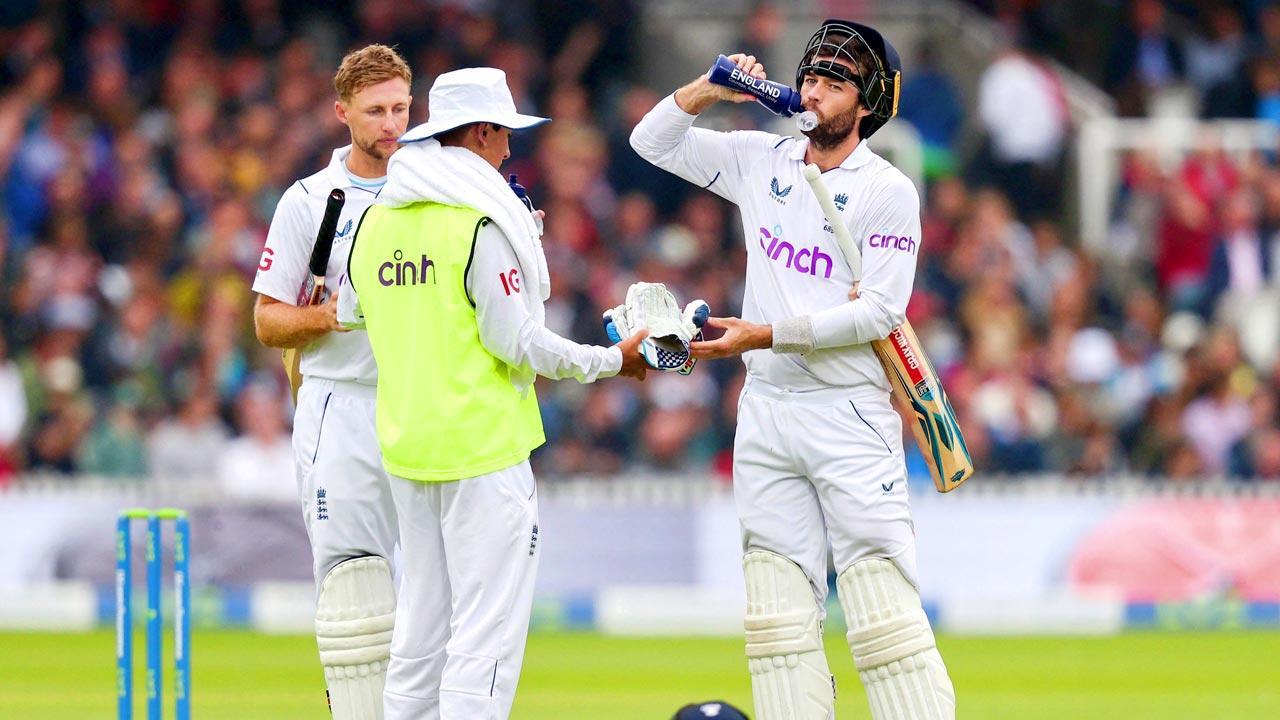Over-rates have been declining for decades and yet they are virtually ignored as the focus is on the money-making capabilities of T20.

England’s Ben Foakes has a drink while switching gloves during the first Test v NZ at Lord’s last month. Pic/AFP
 Australia endured a monumental set back when Sri Lanka won the second Test, but it was the players’ continuing indifference to etiquette that causes most concern.
Australia endured a monumental set back when Sri Lanka won the second Test, but it was the players’ continuing indifference to etiquette that causes most concern.
ADVERTISEMENT
The match confirmed Australia still have a problem against good finger-spin bowling. However, Australia also suffered from the Decision Review System (DRS) insanity that bedevils Test teams.
While England have recently done much to improve the image of Test batting, the worrisome DRS and the continuing glacial over-rates need urgent attention.
In July 2016, the DRS was extended to include the full delivery path. In December, the ICC’s David Richardson indicated the change was implemented to rid the game of the howler and ensure the correct decision. DRS rarely achieves either of those results.
During the Galle Test, Dinesh Chandimal was batting on 30, with Australia having utilised all its reviews. The Australians then thought Chandimal got an edge to an attempted ramp shot, but the not out decision prevailed and he produced a game-changing 206 not out.
Reviews misused
Australia definitely misused their reviews on some 50-50 decisions. However, it proved once more the DRS doesn’t always over-turn legitimate appeals or provide the correct decision because the fielding side has a finite number of reviews.
If the ICC wants to employ the DRS it should at least achieve the results for which it was meant. The DRS is technologically-flawed, but is also inadequate because there are LBW and caught decisions which can be complicated. Many countries can’t afford the top technology so they effectively play under a different set of laws to those who can pay for the best system.
The best DRS technology should be provided to all teams by a cricket body, who then operate the system rather than leaving it to television. The system was introduced to supposedly help umpires rather than predominately protect DRS. Currently it achieves the latter aim. Over-rates have been declining for decades and yet they are virtually ignored as the focus is on the money making capabilities of T20. The reason 90 overs in a day was originally recommended is because that’s what a team should bowl.
Under Clive Lloyd, the West Indies promoted an argument that over-rates don’t matter when matches are being won in less than the allotted time. That argument is flawed. The batting team should receive a reasonable amount of deliveries in a six-hour day while front-line bowlers tire at an acceptable rate. The overs are rarely completed even with extra time allowed and those extensions are a blight on the game.
In addition, umpires don’t enforce on-field etiquette, probably because they lack the backing of the administrators. This is unfair on patrons who are consequently short-changed.
Captain should be suspended
The administrators could make major compromises and then demand that players bowl 90 overs in six hours with no deductions accepted. A captain should be suspended without question if this aim isn’t achieved.
There are many areas for compromise. The administrators could abolish advertising on sightboards, the replaying of possible boundaries, reduce the constant drink shuttles and glove changes while eradicating needless mid-pitch chats during overs. They could also return to a back foot no-ball (without a drag problem), thereby virtually eradicating a boring facet of the game as well as improving over-rates. There is no doubt better bats create field placement headaches for a captain. Nevertheless, the often senseless spreading of the field hasn’t helped teams either dismiss a batsman or improve over-rates.
The balance between bat and ball needs to be constantly monitored, but instead appears to be religiously overlooked.
The skills of the game are evolving, but the laws often don’t keep pace with the need to improve the spectacle. Some senior players have expressed a desire to foster Test cricket’s image, but to do so, they require a working partnership with the administrators. If a much-needed partnership to improve the game is not forthcoming then it’s time for the senior players to set the ball rolling.
 Subscribe today by clicking the link and stay updated with the latest news!" Click here!
Subscribe today by clicking the link and stay updated with the latest news!" Click here!








